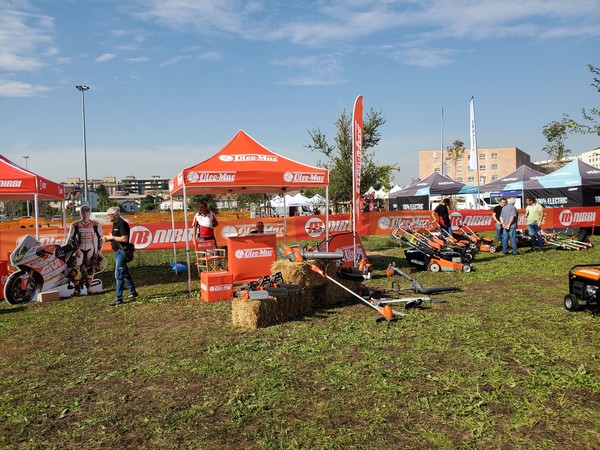
Demogreen, the green experience
The gardening equipment demonstration days, held in San Donato Milanese, were attended by 40 exhibiting companies, targeting gardeners, maintenance workers and landscaping professionals. The many variables that the gardening sector will have to manage in the near future include climate change, involving new varieties of cultivated plants and different growing cycles
The latest edition of Demogreen, the dynamic exhibition of gardening equipment, took place this year in San Donato Milanese, on the outskirts of Milan, after having been hosted until last year in Novegro, also in the Milanese belt. The new location, with the evocative name of Parco dei Conigli (Rabbit Park), proved to be functional for the objectives of the event - organised by Demogreen srl - thanks also to the weather conditions, which rewarded the initiative with splendid sunny days, after the intermittent rains of the previous weeks. After all, it is precisely the open spaces that characterise this event where it is possible to see the equipment at work, in real conditions. According to the exhibitors, whom Mondo Macchina met, the visitors were mostly professionals from the industry. The decision to hold the event on two weekdays, Thursday 28 and Friday 29 September, also helped to select the audience. The origin, as was to be expected, was largely from northern Italian regions, but there was no shortage some various green professionals from regions such as Tuscany, Umbria and even Puglia and Calabria.
This year, the exhibition had a definite "electric" connotation: most of the 40 or so exhibitors had at least some battery-powered products, if not the entire range. Today, environmental protection is an everyday topic and everyone says they are interested in it - this emerges from the statements of the attending companies and operators - but there is still some resistance, because choosing low-impact equipment generally entails a greater initial investment, even if this expense pays off over time in terms of functionality and maintenance. Especially when it comes to high-powered equipment, such as a lawn mower for large areas, it is necessary to assess how many cycles a battery sustains in order to compare it with cheaper products. But the choice of battery-powered equipment is in some cases also induced by criteria and regulations adopted by individual administrations. There are public bodies that stipulate, in order to compete for a contract for the maintenance of green spaces, that equipment with combustion engines must not be used. If you want to be awarded that contract, in short, you must have battery-powered equipment. Among the 40 exhibitors, in addition to machinery and equipment manufacturers Barbieri, Bluebird, Caravaggi, Emak, Energreen, Gianni Ferrari, Hinowa, Pellenc, Pezzolato, and Sabre, present with their wide range of machines and specialised equipment for every type of work, from lawn maintenance to sports facilities, from the cleaning of ditches and canals to the management of residual biomass, the San Donato fair also featured manufacturers of seeds, fertilisers and even software for planning in various contexts. Indeed, Green is not only to be understood as landscape or as an urban space to recover some relationship with nature, but also as a functional space within various settings. Increasingly important, for example, is the design and maintenance of sports fields, not just football. The technologies on show included a tool for measuring large areas, which is particularly suitable for the design of large green areas. The British company Moasure demonstrated one of its patents that consists of a sensor with which, thanks to a special stick, one follows the perimeter of the area of interest and not only the shape of the drawn perimeter but also its exact dimensions appear in real time on a smartphone.
During the two-day event, three conferences were also held, hosted in a specially-equipped hall and organised respectively by the event's three partners: Confagricoltura, Assoverde and Kèpos. The latter is an association set up with the aim of promoting the culture of greenery among institutions, schools and private citizens. Climate change was also discussed from the perspective of those who have to choose the plants that will embellish an urban space or a private space, be it a sports centre or the garden of a villa. According to Luigi Pagliani, president of the National Nurserymen's Association, who spoke at the conference on the first day, we have to take into account the rise in temperatures predicted by scientists and therefore use plant species that will be able, in 20 or 30 years' time, to survive a climate that, even in northern Europe, will inevitably be more Mediterranean. This will make it necessary to switch to varieties that until recently were not compatible with the climate of countries like France or Germany and that, instead, will be in their ideal habitat in the coming decades. "Enlightened green designers," says Pagliani, "as well as public administrators, must choose plants for gardens thinking that they are not for them but for their grandchildren. They must think about the climatic conditions that will be there in 30 or 40 years. That is, rising temperatures, less availability of water and moisture in the soil and atmosphere".








